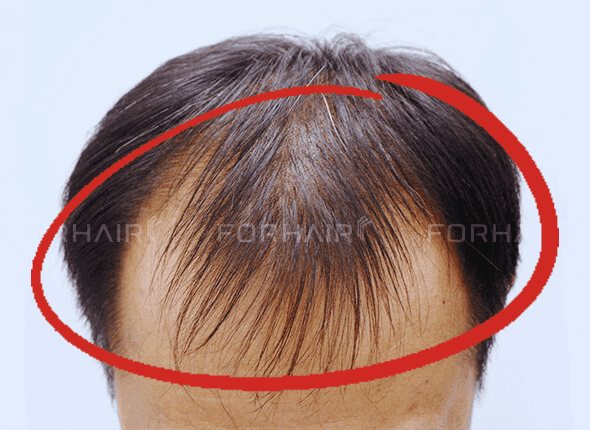Challenges and Growth Factors in the Hair Loss Market
The pharmaceutical and healthcare industries are facing tough challenges, including declining investor confidence and reduced government support. However, one sector experiencing steady growth is hair loss treatment. With an aging population and increasing cases of hair loss among younger individuals, the market for hair loss treatments continues to expand.
Hair loss can be caused by various factors, such as genetics, stress, and aging. Therefore, accurate diagnosis and tailored treatments are essential. The most common types of hair loss include androgenetic alopecia (AGA), alopecia areata (AA), and telogen effluvium.
Key Types of Hair Loss and Treatment Approaches
1. Androgenetic Alopecia (AGA)
Androgenetic alopecia, commonly known as male or female pattern baldness, occurs when testosterone is converted into dihydrotestosterone (DHT) by the enzyme 5-alpha reductase. DHT binds to androgen receptors in hair follicles, causing them to shrink and leading to gradual hair loss. Common treatments include:
- Minoxidil (topical solution)
- Finasteride and Dutasteride (oral medications that inhibit DHT production)

M hair loss
2. Alopecia Areata (AA)
Alopecia areata is an autoimmune disorder where T lymphocytes mistakenly attack hair follicles, resulting in sudden hair loss. Recently, the FDA approved JAK inhibitors such as Olumiant and Litfulo, which work by blocking the immune response that triggers hair loss.
Challenges with Existing Hair Loss Treatments
While Minoxidil and DHT inhibitors like Finasteride have been widely used, they have limitations. Minoxidil requires consistent application to maintain results, while Finasteride and Dutasteride are not recommended for women or children due to hormonal side effects. Additionally, the expiration of patents for these medications has led to an influx of generic versions, making it difficult for pharmaceutical companies to generate new revenue.
Developing new drugs for hair loss is expensive and time-consuming, and research in this field has gained serious traction only in recent years. Due to these factors, many pharmaceutical companies prioritize developing improved formulations of existing drugs over investing in entirely new treatments.
Trends in New Hair Loss Treatments: South Korea Ranks #2 Globally
According to the hair loss research blog Hair Loss Cure 2020, South Korea ranks second in the world for hair loss research and development (R&D), following the United States. Several South Korean pharmaceutical companies are actively conducting clinical trials on innovative hair loss treatments:

avodart © jw-pharma
- Daewoong Pharmaceutical & Inventage Lab: Long-acting Finasteride formulations
- Chong Kun Dang: Long-acting Dutasteride formulations
- Mujin Medics: Spray-based scalp treatment
However, concerns have arisen regarding Finasteride’s potential link to depression and suicidal thoughts, leading to regulatory scrutiny in Europe. As a result, there is a growing demand for alternative treatments targeting different biological pathways.
New Approaches to Hair Loss Treatment
1. Targeting Androgen Receptors
Research into androgen receptor (AR) inhibition is gaining momentum. China is actively developing AR inhibitors, while South Korea’s Olix is using RNA interference (RNAi) technology to break down ARs, with clinical trials currently underway.
2. Small Molecule Drug Innovations
Companies like JW Pharmaceutical and CK Regeon are exploring new small-molecule drugs to activate hair growth pathways. Some focus on activating WNT signaling, which plays a crucial role in hair follicle regeneration.
3. Protein and Antibody-Based Therapies
Several biotech companies are working on treatments using protein and antibody drugs:
- Keramedix: Developing a keratin-based hair loss treatment
- Daewoong Pharmaceutical: Investigating Botox (Nabota) for its potential hair growth effects
- Epi Biotech: Developing an antibody that reduces CXCL12, a protein linked to hair follicle shrinkage
4. Cell Therapy for Hair Loss
Japan’s Shiseido has conducted clinical trials using dermal sheath cup cells, with commercial treatments expected to launch soon. South Korea’s Epi Biotech is also working on cell therapy, focusing on mass culturing hair follicle cells while preventing cell aging.
Other companies are exploring next-generation technologies:
- T&R Biofab: Using 3D printing for hair follicle research
- Kangstem Biotech: Developing hair organoid technology
Future Outlook and Challenges
As the hair loss treatment market expands, there is a rising demand for treatments with fewer side effects and greater convenience. The industry is shifting from generic, low-cost medications to premium therapies with innovative mechanisms of action.
In addition to pharmaceuticals, health supplements and functional cosmetics are increasingly seeking scientific validation for their effectiveness in hair growth. However, South Korea currently has only a limited number of non-clinical contract research organizations (CROs) specializing in hair loss studies, with Epi Biotech being one of the few providing comprehensive efficacy assessments using human hair follicles.
A major breakthrough in hair loss research involves Single-Cell RNA Sequencing, which allows scientists to analyze gene expression in individual hair follicle cells. This has led to the identification of key genes linked to hair loss, enabling the development of targeted treatments. Additionally, advancements in bioinformatics could allow researchers to predict how experimental treatments in animal models would translate to human results, accelerating drug development and improving treatment precision.
With continuous innovation in treatment approaches, the hair loss market is expected to see significant growth in the coming years.